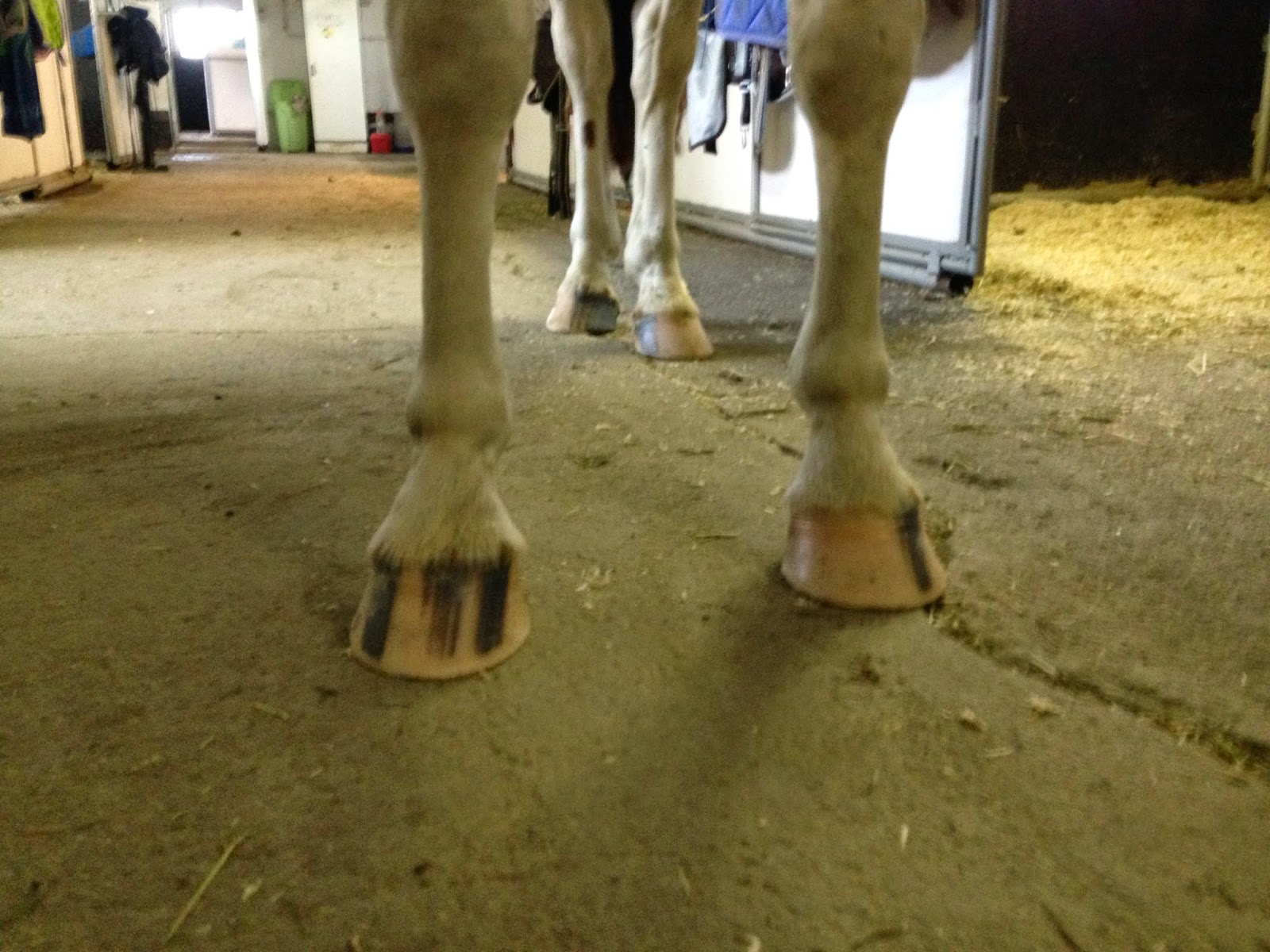My aim is still to get a hoof trimmer to come and see my handiwork a few times a year, as a support for the regular maintenance I do. This ensures I am on the right track as well as helps me ask any questions or show any issues we might have to a professional trimmer.
Jiri, from Vainikan Aitta, has been to see us twice now. First, when we were 'fresh off the boat' in June and now in August. I took the course at Vainikan Aitta at the end of June, so I have been working on Rainbow's feet since. The first lesson at the course was: don't attempt to trim all four in one sitting, as it's hard work for the uninitiated. It is! So, I have been concentrating in turn on hinds and fronts over the past month and a bit.
I am not very quick at it and I am grateful for owning such a patient horse. She is almost as easy to trim as those cadaver hooves on the course... Just less smelly!
But, even in about three times of taking the rasp and the knife in my hand, I have started to get a feel for it. And possibly a bit quicker too – not that speed is the requisite at all. The confidence from having practised on dead horse's hooves has definitely helped me understand the structure but also to learn how much to take off. Another Vainikan Aitta's motto for us students was: it's always better to take less off than too much, so do a little rasping and do it with a thought and consideration, then maybe go on a hack and see afterwards if any more needs done. Less is definitely more.

We can also see signs of distress, as that's that the rings essentially are; 'trauma' of any sort – change in gut bacteria through change of diet, diet-based problems, e.g. too much sugar in rich summer pasture... Rings like this can almost be called showing that she has had a degree of 'laminitis'. It has become a bit of a problem word of late, as it is used as a 'monster' that scares us all. The fact is that around 90% of horse have laminitic episodes in their lifetime (although this overwhelmingly high number doesn't mean we shouldn't strive to eradicate it). It's any kind of inflammation of the laminae in the hoof, which can come from a variety of reasons. The best thing is to be vigilant and not wait to act until it has got too bad (e.g. horse leaning back and not wanting to move – that's a life or death scenario). I think Rainbow's episode of being sensitive on certain surfaces in the early summer and me working on her such surfaces without protection from boots at first – as I (stupidly) assumed she'd be OK without them in Finnish gravel roads, when we hadn't ever needed boots in England. There were very few gravel roads in England... And pretty much from the word go she was on pasture here, happily gorging on sugary grasses... Need I say more?
But you live and learn. I am ever more vigilant about any changes she has and I might even start a little diary where I can write it down if I notice something. Over time, if patterns emerge, there may be an easier way of identifying problems. I will also need to start formulating a plan for next summer. It's very difficult, though, to have a solution where both the owner and the horse would be happy, on a yard where the norm is to put horses out on the grass – in big herds, which horses, including Rainbow, love – no matter what. I am not yet in a position to have Rainbow at home on tracks, for I live in a flat with a stamp-sized garden! One can dream...
Here some of my handiwork of late (captions for clarification). Enjoy!
 |
| The other hind in July. |
 |
| All four after trimming on 15 Aug 2014. Fronts were tidied up and trimmed by Jiri and he inspected and advised on my trim of the hinds, which I had done too days earlier, prior to his visit. |
 |
| Hind trim by moi! |
 |
| Front-left done by Jiri - 15 Aug 2014 (apologies for blurriness) |
 |
| Front-right done by Jiri - 15 Aug 2014 |
 |
| Hind-left done by me - 15 Aug 2014 |
 |
| Hind-righ done by me - 15 Aug 2014 |

No comments:
Post a Comment